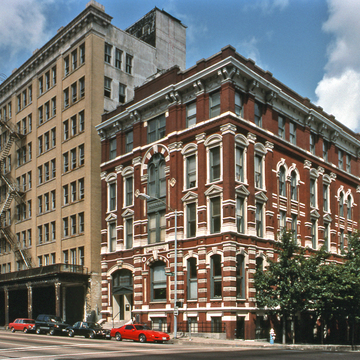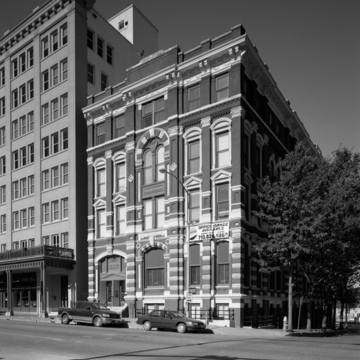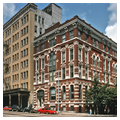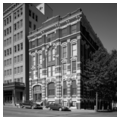The red brick and white limestone Houston Cotton Exchange Building is an exceptional survivor. The Cotton Exchange was the most important economic institution of late-nineteenth-and early-twentieth-century Houston when the cotton trade was the foundation of the city's economy. The exchange building is located two blocks from what was in the 1880s the public wharf at the foot of Main Street and the cotton transit sheds on both sides of Buffalo Bayou. The Cotton Exchange shares its block with another nineteenth-century survivor, the three-story, former W. L. Foley Dry Goods Company Building of 1889 at 214–218 Travis Street, also by Heiner. In between the two at 204– 212 Travis Street is the eight-story Hermann Lofts (Hermann Estate Building) of 1917 by F. S. Glover and Son, built to provide office space for cotton exporters.
You are here
Houston Cotton Exchange and Board of Trade Building
If SAH Archipedia has been useful to you, please consider supporting it.
SAH Archipedia tells the story of the United States through its buildings, landscapes, and cities. This freely available resource empowers the public with authoritative knowledge that deepens their understanding and appreciation of the built environment. But the Society of Architectural Historians, which created SAH Archipedia with University of Virginia Press, needs your support to maintain the high-caliber research, writing, photography, cartography, editing, design, and programming that make SAH Archipedia a trusted online resource available to all who value the history of place, heritage tourism, and learning.





